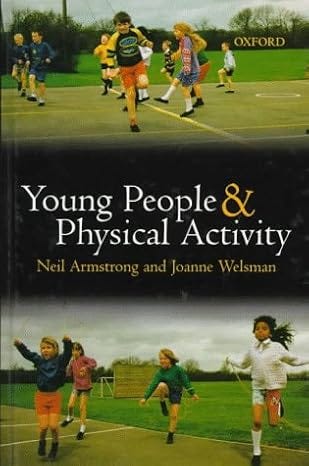Understanding Pediatric Exercise Science: Contributions from the Children’s Exercise and Research Center (CHERC)
Nearly 30 years ago in the Fall of 1996, I started my PhD studies and research assistantship at the Youth Sports Institute @ Michigan State University under the mentorship of Professor Malina. I chose to work with Professor Malina because I wanted to learn about the growth and maturation of youngsters and its application to fitness and sports performance (see the classic text from Malina Growth, Maturation and Physical Activity).
Besides my learnings from Professor Malina, I quickly became acquainted with Professor Neil Armstrong and a host of other scholars and students from Exeter University. It seemed like on a monthly basis they were publishing great papers on children and exercise.
Armstrong and a group of faculty first started exploring the role of physical activity and fitness on cardiovascular disease risk factors in about 1985, and a few years later in 1987 developed into the Children’s Exercise and Research Center (CHERC). Several excellent investigations into the development of aerobic and anaerobic exercise performance occurred in the early years of CHERC and this work was summarized in the 1996 book Young People and Physical Activity.
In 1998, CHERC was recognized for its outstanding contributions and awarded the Queen’s Anniversary Prize, and over the last 25 years has continued to flourish and produce top research. It is currently directed by Professor Craig Williams.
I encourage you to visit the CHERC website and also read some of the excellent work that they have produced in pediatric exercise science.
Selected Review Papers:
Armstrong N, Welsman J. The Development of Aerobic and Anaerobic Fitness with Reference to Youth Athletes. Journal of Science in Sport and Exercise 2020 2(4)
Armstrong N, Welsman J.Clarity and Confusion in the Development of Youth Aerobic Fitness. Front Physiol. 2019 Jul 30;10:979
Armstrong N, Barker AR, McManus AM. Muscle metabolism changes with age and maturation: How do they relate to youth sport performance? Br J Sports Med. 2015 Jul;49(13):860-4
Armstrong N, McManus AM. Physiology of elite young male athletes. Med Sport Sci. 2011;56:1-22
McManus AM, Armstrong N. Physiology of elite young female athletes. Med Sport Sci. 2011;56:23-46.
Armstrong N, Barker AR.Oxygen uptake kinetics in children and adolescents: a review. Pediatr Exerc Sci. 2009 May;21(2):130-47.
De Ste Croix M, Deighan M, Armstrong N. Assessment and interpretation of isokinetic muscle strength during growth and maturation. Sports Med. 2003;33(10):727-43
Patikas DA, Williams CA, Ratel S. Exercise-induced fatigue in young people: advances and future perspectives. Eur J Appl Physiol. 2018 May;118(5):899-910.
Bond B, Weston KL, Williams CA, Barker AR. Perspectives on high-intensity interval exercise for health promotion in children and adolescents. Open Access J Sports Med. 2017 Nov 27;8:243-265
Ratel S, Duché P, Williams CA. Muscle fatigue during high-intensity exercise in children. Sports Med. 2006;36(12):1031-65



